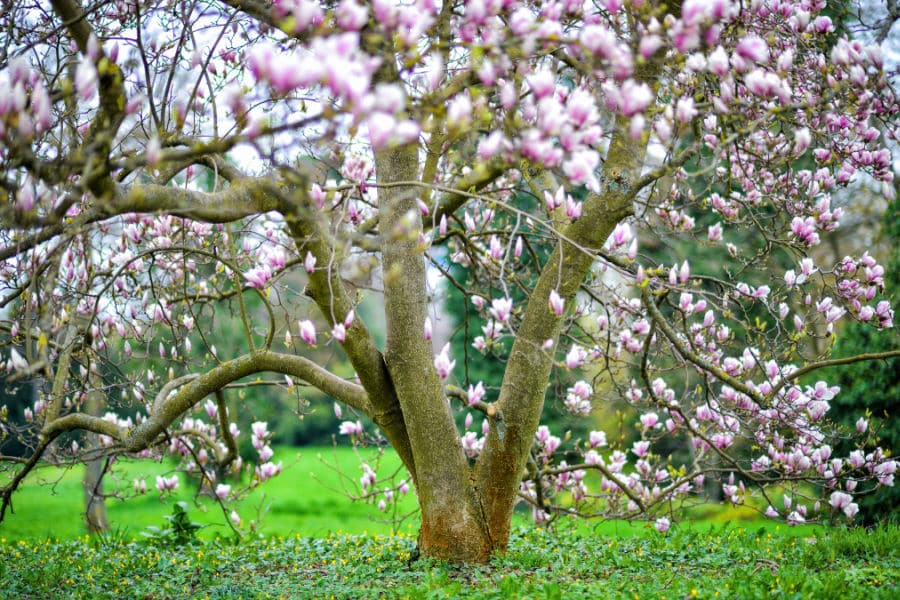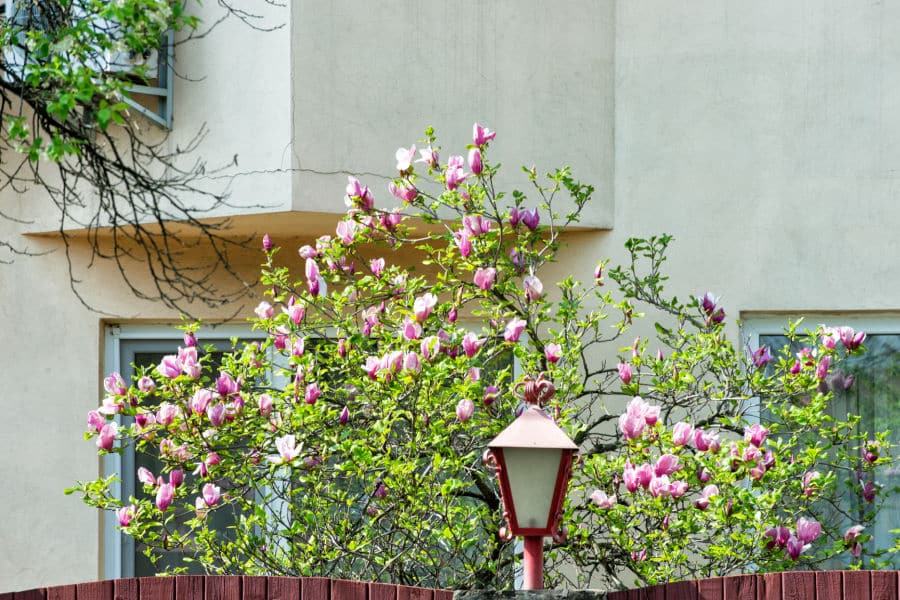
7 Perfect Magnolia Trees For Your Yard
All around the world, Magnolia Trees are well-known for their great splendor, beautiful flowers, and broad succulent leaves. Magnolia flowers can be large and luminous, or they might be small and abundant in number. Most Magnolia trees would grow into large shade trees, while others might serve as excellent evergreen shrubs and hedges.
There are a number of reasons why these trees make the perfect choice for your yard. They are super easy to grow, tolerant of the scorching Southern Summers and frigid Northern Winters, resistant to pests and most tree diseases, and best-loved by migrating birds. Magnolia trees are indisputably one of the most compatible trees that will grow well in almost all regions of the U.S.
Having more than 200 striking varieties, there is surely a Magnolia tree that will make a fine appearance in your yard!
History of the Magnolia Tree

The history of the great Magnolia tree is interesting and not known by most. The name, Magnolia, comes from the name of a French Botanist, Pierre Magnol, who was so in awe of this tree that he transplanted it to Europe some 300 years ago. Also, you will find the traces of this ancient genus even before trees!
The lovely flowers of the Magnolia tree are believed to have evolved to inspire pollination by insects. Also, the tough reproductive structures of Magnolia flowers are specially bred to stand the damage from the pollinating agents. Not just that, some specimens of the Magnolia tree have now developed as evergreens.
Great Magnolia Tree Options for Your Yard

1. Southern Magnolia
The most popular of all Magnolia varieties, the Southern Magnolia Grand bloom is an iconic tree to have in your landscape. This tree is one of the most commonly grown specimens of Magnolias throughout the U.S., and for good reason. Starting from late Spring, the show of frothy, vanilla-like white flowers and glossy broad leaves continues till late Summer - definitely a sight to behold!
- Compatible Zones: 6 to 10
- Size upon Maturity: 60 to 80 ft.
- Sunlight Requirements: Full Sun and partial shade
- Soil Type Preferences: Acidic, moist, loamy, sandy, well-drained soil
- Irrigation: Moderately drought and flood resistant
2. Saucer Magnolia
The Saucer Magnolia, also known as the ‘Magnolia X Soulangiana’ is a deciduous variety of the Magnolia. These are typically short, low-branched trees with full-sized, saucer-shaped flowers that take a beautiful pink color. Saucer Magnolia trees are also called as the Pink Magnolia trees.
These trees, however, only bloom during late Winter and early Spring. The early-Spring flowers tend to be white with shades of deep pink and purple at the bottom. These bright consummate flowers are accompanied by broad deep green leaves – a beautiful tree for any landscape!
- Compatible Zones: 4 to 9
- Size upon Maturity: 20 to 30 ft.
- Sunlight Requirements: Full sun
- Soil Preferences: Acidic, moist, loamy, sandy, well-drained soil
- Irrigation: Moderately drought tolerant
3. Star Magnolia
Star Magnolias are pretty landscape trees that display deep green leaves, a gray bark, and sweet-smelling white flowers. Going by the name Magnolia Stellata too, these online trees are super hardy. Being a deciduous tree, they make fine small yard trees.
- Compatible Zones: 4 to 9
- Size upon Maturity: 15 to 20 ft.
- Sunlight Requirements: Full sun and partial shade
- Soil Preferences: Acidic, moist, loamy, sandy, well-drained soil
- Irrigation: Moderately drought and flood resistant
4. Magnolia Kobus
Native to the forest region of Japan, the Magnolia Kobus is a medium-sized, deciduous tree (and can also be considered a large shrub). As a juvenile tree, it has a pyramidal shape that matures into a widespread tree with a large, round, dense canopy.
From late Winter to early Spring, the Magnolia Kobus is saturated with goblet-shaped, pleasant-smelling white flowers with tints of pink and purple.
- Compatible Zones: 5 to 8
- Size upon Maturity: 25 to 30 ft.
- Sunlight Requirements: Full sun and partial shade
- Soil Preferences: Acidic, moist, loamy, sandy, well-drained soil
- Irrigation: Fairly drought resistant. Can tolerate flooding to some extent
5. Jane Magnolia
You may call the Jane Magnolia a large-sized shrub or a small tree. These special online trees were cultivated all across China and Japan for centuries and are native to Southwest China. These large deciduous trees are popular for their grand show of pink to purplish-maroon flowers during April and May, which are then substituted by leaves.
With a mild sweet scent, the flowers on the Jane Magnolia are tulip-shaped, whereas the leaves are leathery and broad in shape. Plant them to be the focal point of your landscape or have them as a hedge - they are always a great choice!
Compatible Zones: 4 to 7
Size upon Maturity: 10 to 15 ft.
Sunlight Requirements: Full sun
Soil Preferences: Silty, Acidic, moist, loamy, sandy, well-drained soil.
Irrigation: Less tolerant to droughts and floods
6. Sweetbay Magnolia
All types of Magnolias are well-known for their beauty, splendor, and exotic ones, but the Sweetbay Magnolia is simply one of the best (and one of the most popular)!
These trees, also known as Magnolia Virginiana, come off with creamy-white flowers adorned with seeded red fruits that attract many birds when ripened. Sweetbay Magnolias are the perfect trees for yards as they create less mess, need less space to thrive, and the refreshing lemony scent of their flowers during Spring and Summer is sure to bring you pleasant day-dreams!
- Compatibility Zones: 5 to 10
- Size upon Maturity: 10 to 20 ft.
- Sunlight Requirements: Full sun and partial shade
- Soil Preferences: Silty, Acidic, moist, loamy, sandy, well-drained soil.
- Irrigation: Can withstand periodic flooding
7. Cucumber Magnolia
Wondering if this variety of Magnolia yields cucumbers? Well, not really. Native to the wooded valleys of Missouri beside the Mississippi River, the Cucumber Magnolia tree is known for the green, cucumber-like fruit that come in pair with the flowers. This deciduous tree is well known for its slightly sweet-scented, greenish-yellow flowers of the shape of a tulip. It is easy to grow and is excellent for flowering and shade purposes.
- Compatible Zones: 3 to 8
- Size upon Maturity: 40 to 70 ft.
- Sunlight Requirements: Full sun and partial shade
- Soil Preferences: Moist, well-drained, rich soil
- Irrigation: Intolerant to extremely wet or dry conditions.
No matter which type of Magnolia tree you bring home, these trees are sure to stand out as the focal point of your yard!
